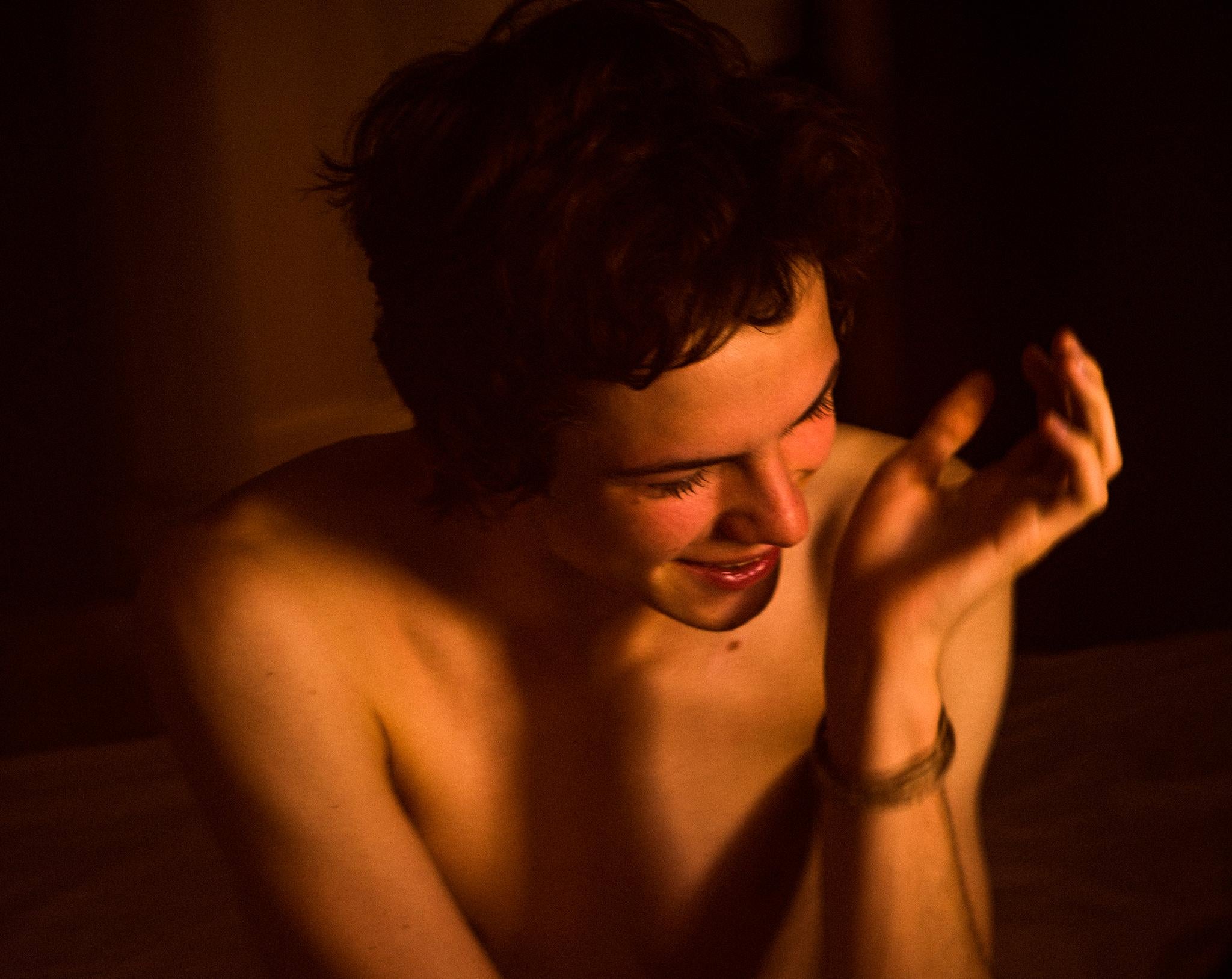Photographer explores modern safe spaces for LGBT youth through series of candid portraits
Matt Lambert explored how digital platforms can operate as safe spaces for LGBT youth through his candid portraits

A photographer has captured a string of gay men – who he found through the gay dating app Grindr - in their most natural and vulnerable positions.
Matt Lambert, a Berlin-based filmmaker and photographer who comes from Los Angeles, was keen to explore the safe spaces gay men identify with particularly after the mass shooting in Orlando’s Pulse LGBT nightclub last year where 49 people lost their lives.
‘[After Orlando] people were kind of laughing a little bit at the concept of gay bars being holy and having a sacred quality,” he told The Independent. “Until you have understood what it feels like to not have a place where you can physically be yourself and where you can express your love then you cannot really understand the value of these places for people.”
The book, called Home, contains images candid images accompanied by an account from the person being photographed. He sourced some of the models from Grindr but he knew a large proportion of them before. The honest accounts “reads like a short documentary style of stories” Lambert says. A continual theme throughout the book is the way digital culture has helped to facilitate LGBT relationships through providing a supportive network and more opportunities for gay people to meet each other.
'Home' by Matt Lambert
Show all 8“A lot of my work looks at LGBTQ youth culture… this books look at LGBT youth and the way in which digital culture has made an amazing space for young people to find themselves, explore their identities and find their camaraderie.”
Lambert says he is aware of the negative connotations which can surround gay dating apps, which is best summarised as the belief they are just hook-up apps filled with headless torsos and photos of penises, but he wanted to focus on the way they can help struggling LGBTQ youth, particularly those from small towns.
“A lot of this book was focused on people from small towns especially… it’s a way for people to find camaraderie. Someone can feel like they’re in the middle of nowhere and they are completely isolated. All of a sudden they open up an app and they may never meet the person they’re chatting to but just a sense of being connected, not being alone and being able to communicate and explore who they are in a way which is not just reduced to hooking up on dates,” he says. “For some people it literally saved their lives by making them feel connected.”
One account from a man called Francois described the tiny “Catholic and conservative” town he came from and how the internet helped him to accept his sexuality after meeting and talking to other gay men on websites. Another man, Kristian, said he first expressed his sexuality online at 16-years-old.
“I couldn’t face telling my family about what was going on in my head but somehow it didn’t hold me back telling my online friends,” he wrote. “It made me feel kinda safe knowing that I had people accepting me for who I was even though they were total strangers. I was unknown and it suited me at that time.
Lambert partnered with Grindr for the project and he has now taken a role as a commissioning director with the venture looking to hire young LGBT artists.
Having also been on Grindr himself, he found a couple of the models for his work through his own personal use and said there is “potentially one ex-boyfriend” included in the book. The app also put in an algorithm for users in Berlin spreading details of the casting.
The photos are remarkably intimate and personal, some models pose on their own while others are with partners. The way the stills were shot mirrored the way dating apps can often work, Lambert says, explaining a lot of them were done spontaneously and quicker than his previous projects which have focused on really getting to know a subject during the photography process.
“When you’re taking someone’s photo nude and listening to their life story it’s a pretty intimate thing… Most people were nervous to start but then afterwards were like ‘that was amazing’.”
Part of the concept of Home is to explore how safe spaces for LGBT youth has changed. While it used to be predominantly secret sex and gay clubs, it can now manifest in digital spaces and forums but Lambert says “at the end of the day it is still [about] intimacy and connection”.
He hopes readers of the book will understand the value of these spaces to LGBT youth and the stories of how they first accepted and went about expressing their sexuality, suggesting that heterosexual people can often take these everyday actions of love and expression for granted.
“For the average straight person, thinking about the length they had to go to to be able to first hold a hand is maybe not as dramatic a story as it is for an LGBT person,” he says aptly.
Subscribe to Independent Premium to bookmark this article
Want to bookmark your favourite articles and stories to read or reference later? Start your Independent Premium subscription today.

Join our commenting forum
Join thought-provoking conversations, follow other Independent readers and see their replies